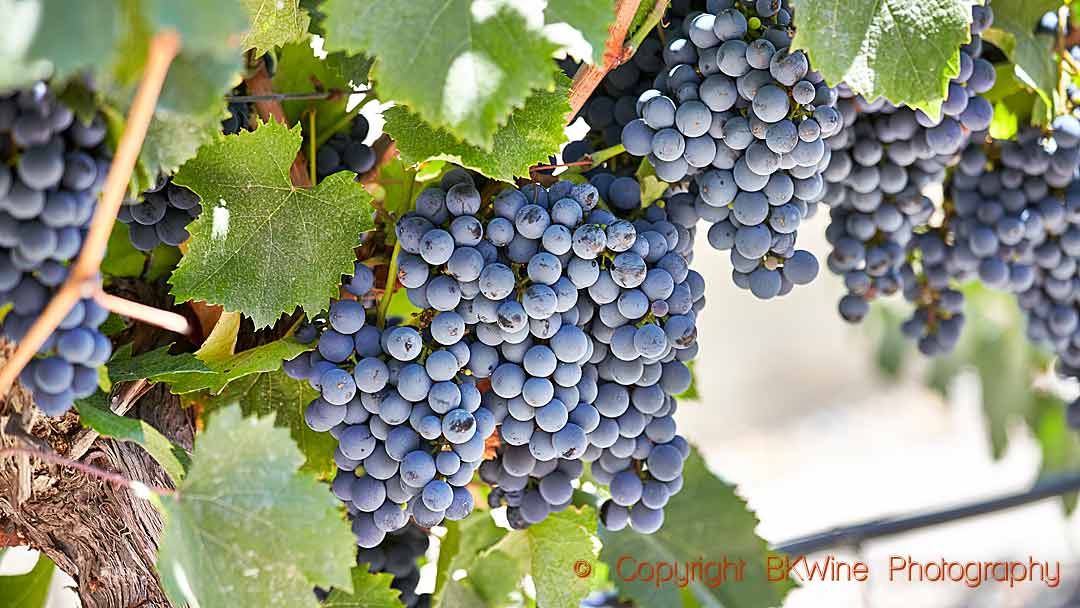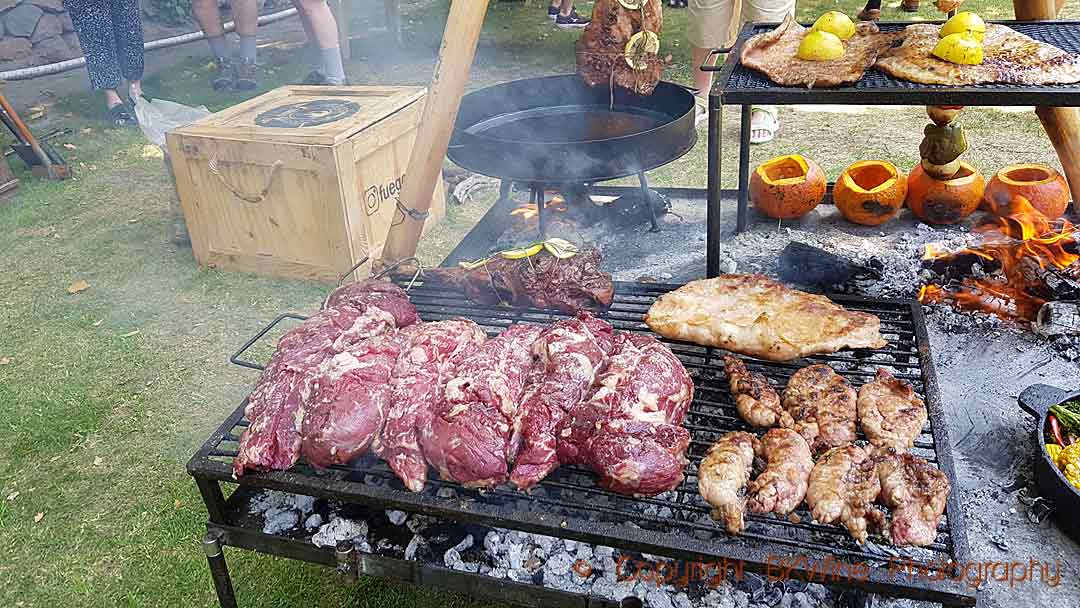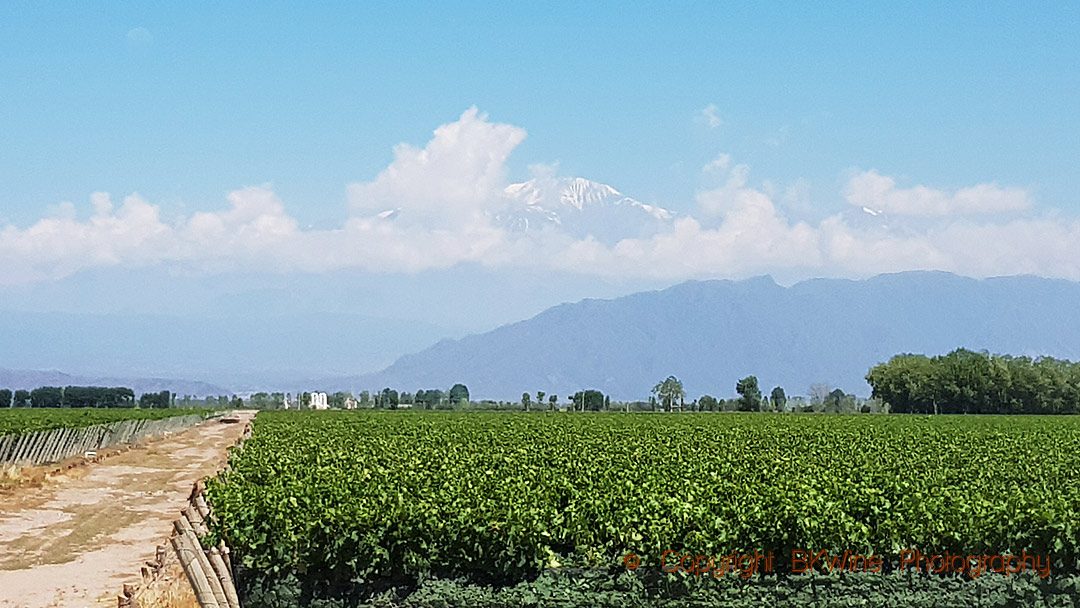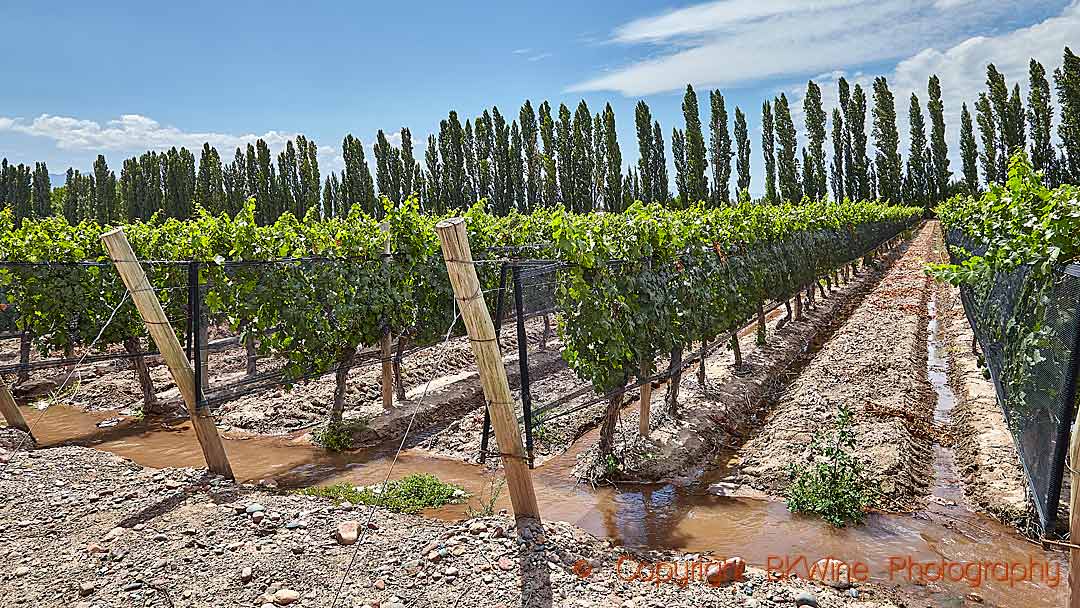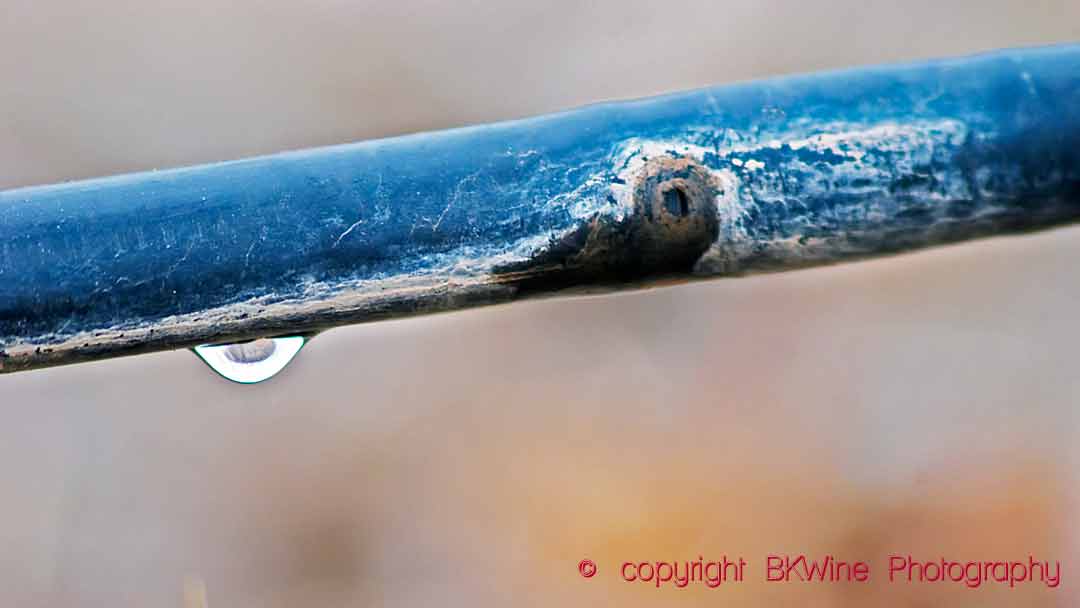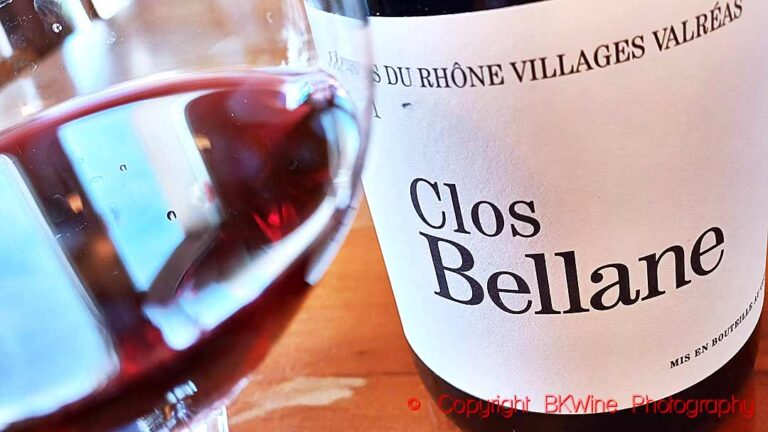Malbec is the signature grape of Argentina and of Mendoza in particular. But it is a grape that has only really emerged as an international top-quality grape in the last few decades. One of the driving persons behind this is Sebastian Zuccardi, third generation winemaker at the Zuccardi winery in Mendoza. He has spent a lot of effort (and money) on finding the best places to grow malbec and the best ways to work with this intensely fruit grape in the winery. I had a long talk with Sebastian about the grape, the soil and the tradition.
Sebastian Zuccardi is the third generation winemaker in the Zuccardi family and the one that is driving development and innovation in the company today. His grandfather started the business in the 1960s. At the time, it was simply an off-shot of a building business to sell an innovative irrigation system (more on that later). Today, the family is 100% focused on producing wine.
This is a longer version of an article published on Forbes.com.
Malbec
But let’s start with the grape. Malbec.
Malbec is originally from the Cahors region in the French region called the South West. From Cahors it spread to Bordeaux. Malbec came to Mendoza in Argentina in the mid-19th century. It had to adapt to the warmer and drier climate, which it did remarkable well. Argentina is today by far the world’s largest malbec country with three quarters of the total acreage.
Malbec wines are dark in colour and generally full-bodied, sometimes very intense and concentrated with good acidity and tannins. The aromas are violets, blackberries, plums and various dark fruit. More ambitious versions of the wines can keep in the cellar for many years, but with their delicious, often refreshing fruit, you can enjoy them young as well. Malbec wines are marvellous with food whether they are young or old. For best quality, the grapes must be fully ripe at picking, which is one reason why it thrives in Argentina.
Read more on Malbec in our grape profile here.
Argentina, The Old World of The New World
For Sebastian Zuccardi, malbec is fundamentally different in Mendoza than in Cahors. It has been adopted by the people of Mendoza and has adapted to the climate and the environment to develop specific and quite different characteristics. It has developed over generations to become “Argentinean malbec”.
Sebastian sees it like this, “I like to say that Argentina is The Old World in the New World. In general, people put Argentina with Chile, South Africa, New Zealand, Australia. But the history of our winemaking is completely different because we started with the Italian and Spanish immigration. They brought the tradition to drink wine and make wine. So for many years, we cultivate the vineyards, we made the wine, and we drank a lot of wine. But we didn’t export. So when Argentina started exporting in the 90s everybody said, ‘this is a new country making wine.’ But when you see how we see our viticulture, for me it is closer to Spain, Italy, Portugal, France, – wine is part of our culture.”
For generations, wine production and wine consumption has been an integral part of Argentinean culture, quite different from Chile. A good illustration of that is the short text you find on the labels of many wine bottles: “Bebida Nacional”, wine is the national beverage.
The same goes for malbec, says Sebastian: “Malbec is a great illustration of this. It’s not that someone said ‘let’s plant malbec because it’s not grown anywhere else.’ Instead, malbec was something that happened here, it became our grape, through generations and generations of growers, looking at the place to grow it, tasting the grapes, walking in the vineyards and making wine.”
Sebastian sees the Mendoza malbec as a result of a long process of selection and adaption. “We have a prephylloxera material, a massal selection, very carefully selected through generation of growers. When you compare malbec from France with malbec in Argentina the DNA is the same but the selection has been completely different.” He sees the grape as one of the fundaments of Argentinean wine production. “Malbec is like nebbiolo in Barolo or pinot noir in Burgundy, or sangiovese in Tuscany. It is a grape that is part of our place.”
Tasting Zuccardi’s wines
Let’s look then at what the result is. The wines. Zuccardi makes over thirty different wines, ranging from the basic varietal Series A and regional Series Q up to very ambitious single vineyard wines. We have tasted a few of these, mainly malbecs to get an idea of what Zuccardi wants from this grape. (Plus a few that are not malbec.)
All these wines are excellent illustrations of how malbec tastes, what characteristics the wines get in different quality levels and different concentrations and how the wine is different depending on where and how it is grown and vinidfied. Are the wines different from Cahors wines because they are from Zuccardi or because Mendoza malbec is different? For you to decide when you taste them.
Prestige wines, vineyard wines
Finca Canal, Paraje Altamira Malbec, 2020, Zuccardi
Valle de Uco, Mendoza, Argentina
The vineyard is at 1100 m altitude, made from 100% malbec, on alluvial soil, fermented and aged in concrete.
One of their finca wines (vineyard wines) from Finca Canal. Big nose with very concentrated fruit, emphasis on berries and juicy fruitiness; young in style and with high acidity; fresh fruits, intense, FRUIT (again!), but not heavy and not bloated; slightly herbal, tart cherries; fresh and no warm climate sweetness or (over)ripe fruit sweetness. In short, delicious.
Aluvional Paraje Altamira Malbec 2020, Zuccardi
Valle de Uco, Mendoza, Argentina
Grown in the San Carlos area at 1100 m altitude. 100% malbec. The soil is very mixed with sand and gravel as well as calcareous. Fermented and aged in concrete vats.
Slightly closed aroma (compared to Finca Canal), slightly more mature style, more restrained and “dark” aroma, more blackberries (as opposed to red fruits), more substance (matière), thicker in structure but also a bit softer; still very dry in style without excessive fruit sweetness, good tannins, a hint of liquorice, a certain astringency that makes us wonder if maybe some stalks/whole bunches were in the tank.
Aluvional Gualtallary Malbec 2020, Zuccardi,
Valle de Uco, Mendoza, Argentina
From a vineyard at 1400 m altitude. Also alluvial soil but from the Las Tunas River, mainly sandy and gravelly, but very mixed. Fermented and aged in concrete vats.
More expressive and open on the nose, charming and attractive, aromatic, almost a little floral, a hint of roses, blackberry, blueberry. In the mouth: high acidity, some tannin but with good balance, intensity, long taste with dark, sour cherries. Clean and nice fruity taste.
All three of these wines were very good, but today, we probably prefer, by a hair’s breadth, the Aluvinonal Gualtallary.
And one white wine:
Fosil Vino de Paraje San Pablo Chardonnay 2022
Valle de Uco, Mendoza, Argentina
100% Chardonnay, from the San Pablo area 1400 meters above sea level – extreme conditions, calcareous soil with sandy loam, mountain climate. Mainly fermented in concrete, plus some oak.
Characters of citrus, grapefruit, pineapple, slightly aromatic, very attractive, expressive aroma. In the taste: also here a bit aromatic and hints of pineapple, a bit of fullness that matches the healthy, high acidity, quite light and “airy” in style anyway, very good.
Over-all, very ambitious wines. The naming on the labels is not always straightforward, so you have to look closely to get all the details right since many of the labels look similar with similar names. Some of the wines are bottled in extremely heavy bottles, almost one kilo empty, which is perhaps not ideal for wines that will be shipped long distances (which mostly is the case from Mendoza).
Series Q, “village wines”, Paraje wines
Q Malbec, 2022, Zuccardi
Valle de Uco, Mendoza, Argentina
From vineyards in Altamira and Los Chacayes on 1000 m and 1100 m altitude. 100% malbec. Fermented in concrete, aged in a mix of concrete and 500 l untoasted French barrels.
Quite intense on the nose, with dark fruit, slightly burnt notes and a touch of bitterness in the aftertaste (not unpleasant). The aromas have dark fruit, straightforward, with good freshness, typical malbec.
Concreto Malbec 2022 Zuccardi
Valle de Uco, Mendoza, Argentina
From several different vineyards on 1100 m and 1200-1500 m altitude in Altamira and Gualtallary. Fermented in concrete amphorae with whole bunches. 100% malbec.
Delicious dark fruit, quite a soft nose, expressive, coffee roasting, a hint of chocolate. On the palate, it is intense and powerful with very dark fruit and discrete tannin, and quite balanced, with slightly bitter hints in the aftertaste.
José Zuccardi Malbec 2020 Zuccardi
Valle de Uco, Mendoza, Argentina
Malbec with 5% Cabernet Sauvignon. Vineyards in Altamira and Gualtallary, 1100 m and 1360 m. Fermented in concrete and aged for 24 months in 2500 l foudres and 500 l barrels.
It has a tight structure, more so than Concreto, and has quite different aromas with a hint of cedar. On the palate: dense and concentrated fruit, a lot of tannins, noticeable astringency, slightly dry in structure, dark plums and olives.
Poligonos, San Pablo Malbec, 2022 Zuccardi
Valle de Uco, Mendoza, Argentina
Village wine from the San Pablo village. 100% malbec. Sandy loam, gravel and calcareous. Fermented and aged in concrete.
Delicious aromas with lots of fruit, black currants. The structure is tight, a bit austere, with nice refreshing fruit, a lot of acidity, long taste, good, the favourite so far in the second series.
Poligonos, Altamira Malbec, 2022 Zuccardi
Valle de Uco, Mendoza, Argentina
Vineyards in Altamira at 1100 m, mainly alluvial. Fermented and aged in concrete. 100% malbec.
Delicious, intense aroma, lots of red berries, softer in style but with substantial tannin, very delicious fruit, red fruit with a tendency towards dark, dense, matière (substance), more freshness than the previous ones, a fruitiness that is not as ripe (so, fresher), big body.
Poligonos, Gualtallary Malbec 2022, Zuccardi
Valle de Uco, Mendoza, Argentina
Gualtallary vineyards at 1300 m, alluvial sand, gravel, calcareous. 100% malbec. Fermented and aged in concrete.
Quite a lot of tannin, quite astringent, but with good ripe fruit, a little hint of overripe fruit, a lot of concentration, quite “beefy”.
In this series, Poligonos Altamira and San Pablo were undoubtedly our favourites.
The mark of the third generation Zuccardi
As I mentioned, Sebastian Zuccardi is the third generation Zuccardi’s making wine in Mendoza. Each generation has brought something new to the business, a change that takes the business in a new direction. Even if his father, José Alberto Zuccardi, is still very actively involved in the business, he is, after all, CEO of the company, Sebastian has already put a significant mark on the direction the company is taking.
The company has an R&D department that Sebastian jokingly calls the Revolution & Development department. He certainly seems to have pulled the company in a new direction. If it means a “revolution” – for you to decide.
I think the recent changes can be summarised in these points, although this is my interpretation of the situation, not Sebastian’s. In a few words: “focus on malbec, go to higher altitudes and cooler climates, use less wood”. Or to go a little bit more into details:
An almost exclusive focus on the malbec grape
For Sebastian, malbec is a unique strength for Mendoza; it has developed and adapted over many years in the region and gives its unique expression of the landscape, the soil and the climate. It is a grape perfectly suited to Mendoza, according to Sebastian.
Vineyards in the Uco Valley, cool climate
Well, this is a very clear direction. The focus of the company has moved to Uco Valley, much driven by Sebastian’s experiences there. This means higher altitude, cooler climate, more acidity and fresher wines. More on this in a minute.
Little or no oak ageing, a preference for concrete
As with too ripe berries, or too hot temperatures, too much oak can mask the flavours of the grapes and the expression that they have of the origin, the location. Sebastian likes concrete tanks, “concrete is natural, and it doesn’t give a flavour to the wine,” he says. The tanks he has built in the new winery are made from local materials. He also has some eggs and amphorae.
Wines with more fruit and freshness
It goes hand in hand with the previous points. This is why they are now focussing so much on the Uco Vally, cooler climate, fresher wines. He is also careful not to pick too late to avoid over-ripe fruit.
And the last point:
A focus on geographical differences, single vineyard wine and regional wines
This is currently illustrated by the “finca” (vineyard) and “paraje” (sub-region) wines, each with slightly different soils, climate, and altitude.
This has also led to a very extensive range of wines, from easy-drinking every-day wines to top of the line concentrated wines, some with very ambitious prices too.
Looking to the future
What are then the next steps for Zuccardi? Sebastian Zuccardi mentions a few things when I ask the question. First of all, he has no intention of expanding outside Mendoza. This is his home, the land he knows. But there’s still a lot to learn, which is no surprise, making quality wine in Uco Valley is a recent development.
He is no stranger to working with other grapes than malbec. He’s “crazy about whites”, which may fit with a cooler climate, in particular semillon. And perhaps cabernet franc.
He comes back to the fact that Mendoza is not yet quite recognised as capable of making world-class wines. “We need to talk about the places, we need to communicate about the country, and continuer to learn about the terroir. Show the world what we can do”.
His final comment, curiously, or happily (!), was “we need to have people visit us!” And what better way to go visit Mendoza than coming on a wine tour to Mendoza in Argentina and Chile with BKWine!
Three generations of Zuccardis
Over three generations, Zuccardi has developed from a local building construction company to a leading Argentinian wine producer.
The Zuccardi wine adventure started already in the mid-20th century, starting with Sebastian Zuccardi’s grandfather, Alberto Zuccardi. Sebastian looks back at the beginning, saying, “I’m the third generation in the family making wine. My grandfather started with wine in 1963. My grandfather had a building company. He didn’t have any relationship with wine. But he developed, in his building company, a very efficient irrigation system. As you know, where we cultivate, it is impossible to cultivate without irrigation. So irrigation is extremely important.”
The – at the time – innovative irrigation system was based on the traditional flood irrigation system. What was revolutionary was that it measured the amount of water that was given to each vineyard by opening and closing the water gates in a controlled and measured manner, which made it possible to use the water more efficiently. Water is a critical resource, so this was an important improvement. However, things change. New technology was developed, and drip irrigation arrived in the 90s. It was a more efficient way to irrigate, according to some, so flood irrigation started to be phased out. Today, you can see both drip and flood irrigation in Mendoza.
At the time, the new Zuccardi irrigation system was an important development, but it still needed to be marketed and sold. Sebastian Zuccardi continues, “My grandfather planted the vineyard, not with the idea to make wine. His idea was to sell his irrigation system to other growers. Luckily for me, he fell in love with agriculture, and he discovered that his passion was agriculture, and he decided to continue planting vineyards.”
That was the first generation in the Zuccardi wine history. The second was Sebastian’s father, José Alberto Zuccardi. When Sebastian Zuccardi’s father took over the business, he decided to change the activity. He was not interested in the building business, so he decided to focus entirely on wine.
So, Sebastian is the third generation. Looking back on his family history, he remarks, “In every change of generation in the family, there is a ‘refoundation’ of the family. Today, I am the third generation working in the family. I’m the oldest in my generation.”
Sebastian’s arrival in the company thus meant another “refoundation”, or perhaps almost revolution: “When I joined the family business, we only have vineyards near to Mendoza (City). But I was convinced that we had to plant closer to the Andes Mountains. So I told my father, ‘We have to go to the Uco Valley’.”
Why Uco Valley?
What gave Sebastian the idea to go to the Uco Valley? At the time, there were not many vineyards in this remote part of Mendoza, a one to two-hour drive away from Mendoza City.
“Making sparkling wines was my first product. I started with a friend in secondary school. We needed wines with good acidity to make the sparkling wine. The only way to have acidity is by going to colder areas, and you find the colder areas at higher altitudes in the Mendoza region. So, looking for acidity, I discovered the Uco Valley.”
They moved the focus of the wine business from Maipú, close to Mendoza City, to the Uco Valley. They built a new Zuccardi Winery in the Valley for their new range of premium wines but retained their old winery in Maipú for their basic range of wines, the Series A. Today, they have eight vineyards in Uco Valley, with the winery located in the commune of Altamira.
The new winery that they built in Altamira was a huge investment and a bet, a bet they could do, according to Sebastian, because they are a family company that is long-term focused and not too worried about short-term financials. Even if, as Sebastian says, they still need to be profitable and make money. It was a significant investment that was perhaps not motivated by the wines that they made at the time, I would venture to guess, and it is perhaps for this reason that they are now making a range of wine substantially more expensive than before, based on the quality of the fruit that they can get from the Uco Valley, says Sebastian. Another change of strategy that was possible thanks to being a family company was his decision not to use oak ageing for the top-range wines.
So, let’s take a close look at geography, which is becoming increasingly important in Mendoza.
Mendoza is divided into five different areas. The South, the East, the North, the Centre and the Uco Valley. The Valley is only 10% of the vineyards of all of Mendoza, but it is – at least in some places – closer to the mountains and a higher altitude. This is, of course, a generalisation. Some areas in the traditional parts of Mendoza are also very close to the mountains, or even on the slopes, and at higher altitudes. But in general, the Uco Valley is considered a high-altitude area with an altitude of between 900 metres and 1700 metres.
But Sebastian goes even further, “If I have to give you a definition of the Uco Valley, it would be that we make mountain wines. Everything that happens in our area is in relationship with the mountain. It is based on five things: landscape, climate, water, soil, everything is in relationship with the mountain. The fifth is that we are mountain people. Everything that happens in our mind, living here, is in relationship with the mountain.”
Being in a mountain area has, of course, both advantages and disadvantages. In fact, the area is more of a mountain desert than a normal agricultural area. It has an extremely continental climate, far from the Atlantic Ocean. True, it is close to the Pacific, but the Andes’ almost 7000 metres high barrier shuts it off from any influence from the Pacific. And water is scarce. So, again, irrigation is vital.
If the Uco Valley has made a name for itself as the “cool climate region of Mendoza”, Sebastian now wants to move one step further. He points out that there are very great differences within the Uco Valley. Being in San Pablo, very close to the mountains, is not the same thing as being in Gualtallary, which is at a lesser (comparatively speaking) altitude. The grapes will not be the same, will not be harvested at the same time, and will not have the same aromatics.
This is also reflected in the development of the definition of “sub-appellations” in Mendoza, specifically in the Uco Valley, in recent years, what they call “paraje”.
One of the biggest challenges, perhaps THE biggest challenge, is water. It is indeed almost a desert. This is something that is increasingly an issue for wine regions all over the world actually.
Sebastian explains, “The only way to cultivate here is with irrigation. The source of the water is the snowmelt. We use all this snowmelt water to irrigate our vineyards. The management of the water is a key factor because we need to look for efficiency, but we can also build our root system through irrigation, and we can make great things, or we can make big disasters because the vine is like a lazy dog. If you irrigate every day and you only wet 50 centimetres of the soil, your root system will be there in the top 50 cm. So, our work in irrigation is to push the roots to explore all the soil. My most important work in the vineyards during the season is irrigation decisions.”
You can taste the result of all these decisions in Zuccardi’s wines.
Travel
Undoubtedly, the best way to discover the true soul of Mendoza malbec and Argentina wines is to go there. Explore Mendoza and malbec and cabernet on a wine tour to Argentina and Chile with BKWine.
Travel to the world’s wine regions with the wine experts and the wine travel specialist.
Wine tours that give you insight. BKWine wine tours.



